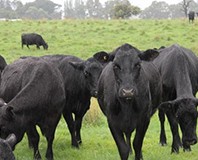Read the latest information on
Foot-and-mouth disease
 As of 1 November 2016, the Australian Johne’s Disease Market Assurance Program for Cattle (CattleMAP) will transition to alternative industry assurance systems. This outcome follows a review of CattleMAP, undertaken by Herd Health P/L on behalf of the Bovine Johne’s Disease (BJD) Steering Committee.
As of 1 November 2016, the Australian Johne’s Disease Market Assurance Program for Cattle (CattleMAP) will transition to alternative industry assurance systems. This outcome follows a review of CattleMAP, undertaken by Herd Health P/L on behalf of the Bovine Johne’s Disease (BJD) Steering Committee.
The new arrangements for CattleMAP participants is another step in the wider BJD Review process said Animal Health Australia’s (AHA) Executive Manager of Biosecurity and Product Integrity Services, Mr Duncan Rowland.
“Feedback received by both producers and industry experts underscored the fact that whilst CattleMAP had served the industry well over the past 20 years, in this period of reform and deregulation the current CattleMAP format is no longer suitable.
“CattleMAP numbers have fallen dramatically over the last decade to unsustainable levels, and participants have not received the expected benefits from being in the program,” said Mr Rowland.
Under the fresh approach to managing JD in cattle, there is a new risk profiling tool for beef cattle – the Johne’s Beef Assurance Score (J-BAS). In addition to this, the Dairy Score has been revised to allow dairy producers to continue to demonstrate high levels of JD assurance. The implementation of relevant biosecurity measures in both of these programs is monitored by annual veterinary review and herd testing at the higher levels, to provide confidence for buyers of assurances of low risk animals.
“Both beef and dairy producers can achieve market advantage by using either the J-BAS or Dairy Score tools, to assure buyers of the JD status of their herds. These scoring systems allow producers and buyers to assess their JD risk, and make informed purchasing decisions,” said Mr Rowland.
Existing CattleMAP herds will transition to a J-BAS or Dairy Score of 8 – the highest assurance level. The highest score requires a property biosecurity plan monitored by a veterinary advisor and testing. Both assurance systems also include lower assurance scores that have different biosecurity and testing requirements. Details of these systems are available on the AHA website and the Dairy Australia website.
Additional resources are available on the Farm Biosecurity website to help producers manage and avoid diseases such as JD. The Beef Cattle and Dairy Cattle pages host a range of information, including videos, manuals and the new National Cattle Health Declaration.